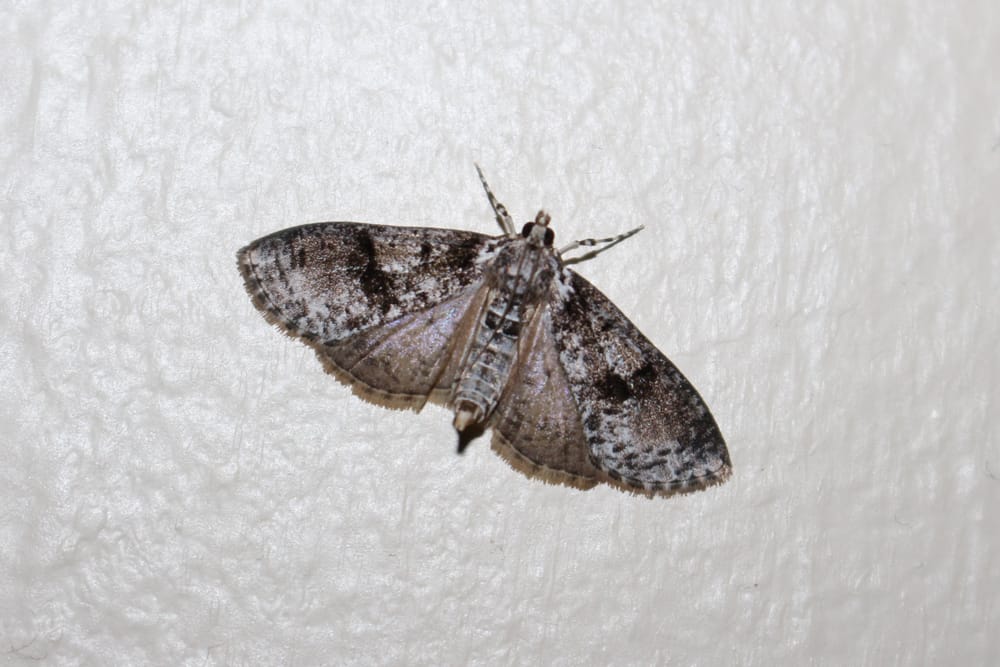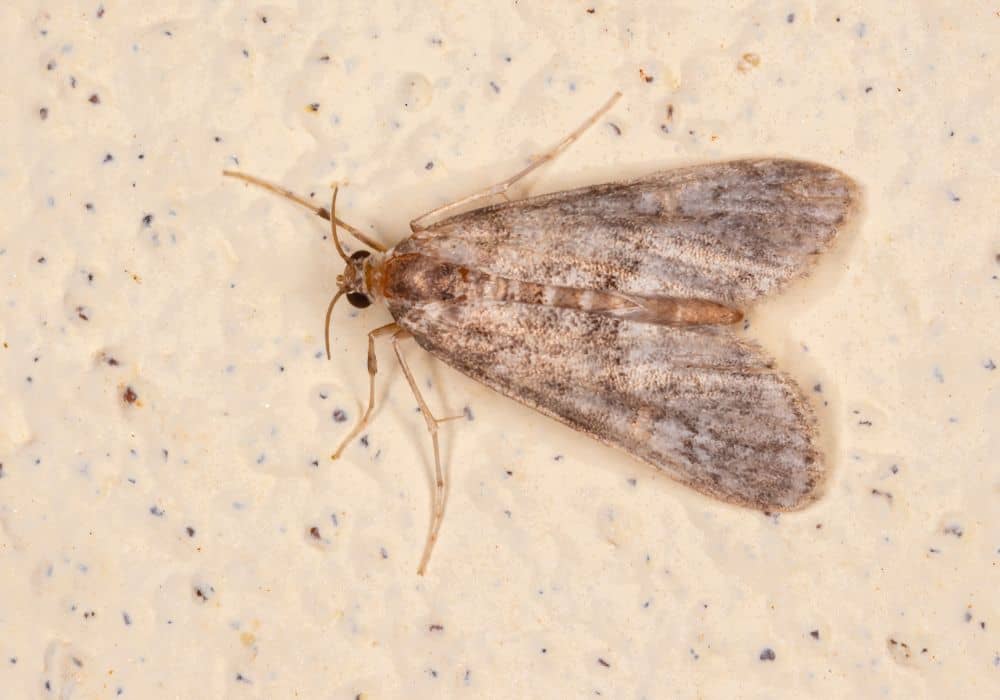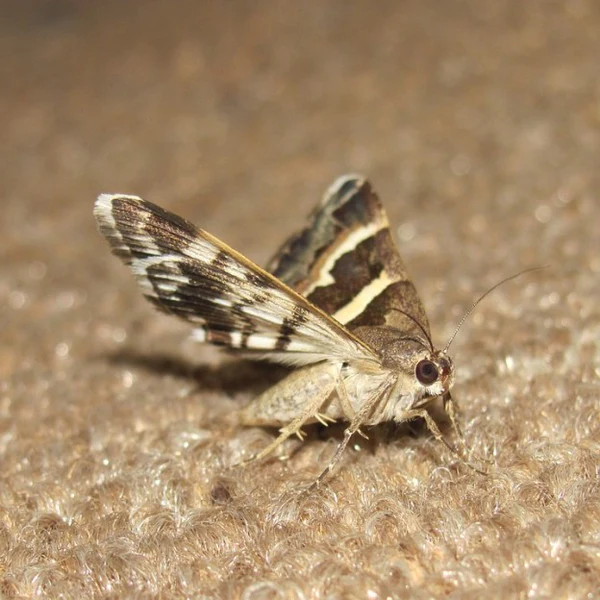Lavender smells nice to people but not to moths. You can use lavender in different ways to stop moths from getting in your clothes and things. You can put dried lavender in your closets and drawers, make a spray with lavender oil, or hang up bunches of dried lavender.
Additionally, you can also put lavender paper in your drawers. Lavender is good for keeping moths away, but if you have a lot of moths, you might need stronger stuff. It’s best to use lavender with other ways to keep your things safe and clean.
How does lavender repel moths?
Lavender’s effectiveness as a moth-repellent stems from its aromatic properties. The scent of lavender contains compounds, such as linalool and linalyl acetate, which humans often find pleasing but are overpowering and unpleasant for moths.
Moths, like many insects, rely heavily on their sense of smell for navigation, mating, and finding food. When they encounter the strong scent of lavender, it disrupts their sensory perception and confuses them.
Furthermore, this confusion can deter moths from areas where lavender is present, making it harder for them to locate clothing and fabrics they might otherwise infest.
Additionally, lavender’s scent can act as a masking agent, making it difficult for moths to detect the odors of the natural fibers in clothing and fabrics that attract them. This adds another layer of protection against moth infestations.
Types of lavender products for moth prevention

Dried lavender flowers: Dried lavender flowers are one of the most common and effective ways to use lavender for moth prevention. These flowers can be placed in small sachets, which are then distributed in closets, drawers, and storage areas.
As the flowers naturally release their scent, they create a pleasant and moth-repellent atmosphere.
Lavender essential oil: Lavender essential oil can be diluted with water and used as a spray on clothing, linens, and storage areas.
Moreover, this method allows for precise application and can be refreshed as needed to maintain its effectiveness.
Lavender sachets: Lavender sachets are small pouches filled with dried lavender flowers or cotton balls soaked in lavender essential oil.
In addition, they can be easily placed in areas where moths are a concern, such as inside clothing drawers or hanging in closets.
Lavender bunches: Hanging dried lavender bunches in closets or storage spaces is both decorative and functional. The lavender bunches release their scent gradually, providing ongoing protection against moths.
Lavender drawer liners: Lavender-infused drawer liners are sheets of paper or fabric that have been treated with lavender fragrance. These can be placed at the bottom of drawers or on shelves, providing a continuous release of lavender scent and protecting items from moth damage.
Where to use lavender for moth prevention?
By strategically placing lavender products in areas prone to moth infestations and using the appropriate application methods, you can maximize the protection against moths and keep your clothing and linens safe.
Closets: Closets are a common breeding ground for moths as they provide a dark, enclosed space with plenty of textiles for moths to lay their eggs on. To prevent moth infestations in closets, place lavender sachets, dried lavender bunches, or lavender-infused drawer liners on shelves, in corners, and among hanging clothes. Ensure the lavender is evenly distributed to cover the entire closet space.
Drawers: Moths can infiltrate drawers and damage clothing and linens stored inside. Lavender sachets and drawer liners are particularly useful in drawers. Place sachets in the corners of the drawer or scatter dried lavender flowers throughout.
Lavender-infused drawer liners can be cut to fit the dimensions of your drawers, providing continuous protection.
Storage boxes: When storing seasonal clothing or linens in boxes, adding a layer of moth protection is essential. Place lavender sachets or dried lavender bunches inside the storage boxes before sealing them.
Additionally, this helps create a moth-repellent environment within the box, safeguarding your items during their time in storage.
How to apply lavender for optimal results ?
To make lavender sachets, you’ll need dried lavender flowers and small, breathable bags or pouches. Fill the pouches with dried lavender flowers, tie them securely, and then place them in the desired areas. These sachets can be easily refreshed by gently crushing the flowers to release more scent.
Making lavender oil spray: To create a lavender oil spray, mix a few drops of lavender essential oil with water in a spray bottle. Shake well before use and then lightly mist your clothing, linens, and storage areas.
Moreover, be cautious not to oversaturate fabrics, and always perform a spot test to ensure the oil doesn’t stain or damage the material.
Hanging dried lavender bunches: Hang dried lavender bunches in closets and storage spaces. To make your own bunches, tie a bundle of dried lavender stems together with twine or ribbon.
Hang them in a location where air can circulate around them, as this helps release the scent more effectively.
Using lavender-infused drawer liners: Lavender-infused drawer liners are readily available for purchase or can be DIY projects. To create your own, select paper or fabric liners and apply a few drops of lavender essential oil evenly on them.
Moreover, allow them to dry completely before placing them in drawers. Replace them periodically to maintain their effectiveness.
How effective is lavender compared to chemical moth repellents?
Lavender is a natural and effective moth repellent when used correctly. Its scent, rich in compounds like linalool and linalyl acetate, confuses and deters moths. Lavender can create a protective barrier in areas like closets, drawers, and storage boxes, preventing moths from infesting your clothing and linens.
However, its effectiveness may vary depending on factors such as the concentration of lavender, the presence of other competing scents, and the severity of the moth infestation.
While lavender is generally successful at preventing moth damage in well-maintained storage spaces, it may be less effective in extremely humid or heavily infested environments.
Therefore, regular maintenance and combining lavender with other preventive measures are often recommended for optimal results.
Comparison with chemical moth repellents
Lavender offers several advantages over chemical moth repellents:
Natural and safe: Lavender is a non-toxic, natural alternative to chemical repellents, making it safe for humans, pets, and the environment. Chemical repellents may contain potentially harmful substances that can pose health risks.
Pleasant scent: Lavender has a pleasant and calming aroma, which can enhance the ambiance of your storage areas and make them more enjoyable to access. Chemical repellents often have strong, artificial odors that can be unpleasant.
Multiple uses: Lavender serves dual purposes by repelling moths and providing a pleasant fragrance. Chemical repellents are typically designed solely for moth prevention.
However, chemical moth repellents are sometimes more potent and longer-lasting, making them suitable for severe infestations. They often contain synthetic compounds like naphthalene or paradichlorobenzene, which create a stronger moth barrier.
When faced with a severe infestation, you may need to use chemical repellents in combination with lavender or other natural methods.
Addressing severe moth infestations

Lavender, while effective for prevention, may not be sufficient to eliminate a severe moth infestation. In cases of widespread infestations, consider the following steps:
Deep cleaning: Thoroughly clean your closets, drawers, and storage spaces to remove moth eggs, larvae, and adult moths. Vacuum carpets and upholstered furniture, and wash or dry clean affected clothing and linens.
Dispose of infested items: Discard or donate heavily damaged clothing or fabrics beyond repair.
Use chemical moth repellents: In severe cases, consider using chemical moth repellents or traps to combat the infestation. Follow the product’s instructions carefully and use them in conjunction with lavender to prevent reinfestation.
Regular monitoring: Continue to use lavender and other preventive measures even after addressing the infestation to avoid future problems. Check your storage areas regularly for any signs of moth activity.
FAQ’s
What smells keep moths away?
Moths are deterred by strong-smelling substances like lavender, cedarwood, and cloves.
How do I permanently get rid of moths?
Permanently getting rid of moths involves a combination of deep cleaning, using moth repellents, and maintaining a clean, organized space to prevent re-infestations.
What insects hate the smell of lavender?
In addition to moths, other insects like flies, mosquitoes, and ants are also repelled by the scent of lavender.
Do moths hate lemon?
Yes, moths dislike the smell of lemon. Lemon-scented products, such as lemon essential oil or citrus potpourri, can help deter moths.
What is the best natural moth repellent?
Lavender is one of the best natural moth repellents, known for its effectiveness and pleasant fragrance. Cedarwood and cloves are also popular choices.
What attracts moths the most?
Moths are primarily attracted to natural fibers like wool and silk, as well as clothing or linens soiled with sweat, food, or body oils. They are also drawn to dark, undisturbed spaces where they can lay their eggs
Final Words
In conclusion, lavender proves to be a natural and pleasant-scented ally in the battle against moth infestations. Its effectiveness lies in the confusion and deterrence it brings to these fabric-hungry insects through its unique fragrance, rich in compounds like linalool and linalyl acetate.
When utilized strategically in closets, drawers, and storage spaces, lavender creates a protective barrier, safeguarding your clothing and linens. However, it’s essential to understand that while lavender is an excellent preventive measure for moth control, its efficacy may vary depending on environmental factors and the severity of the infestation.
When compared to chemical moth repellents, lavender offers several benefits, such as safety for humans and the environment and its pleasant aroma.
Nevertheless, in cases of severe infestations, chemical repellents may be necessary, working in conjunction with lavender or other natural methods.

